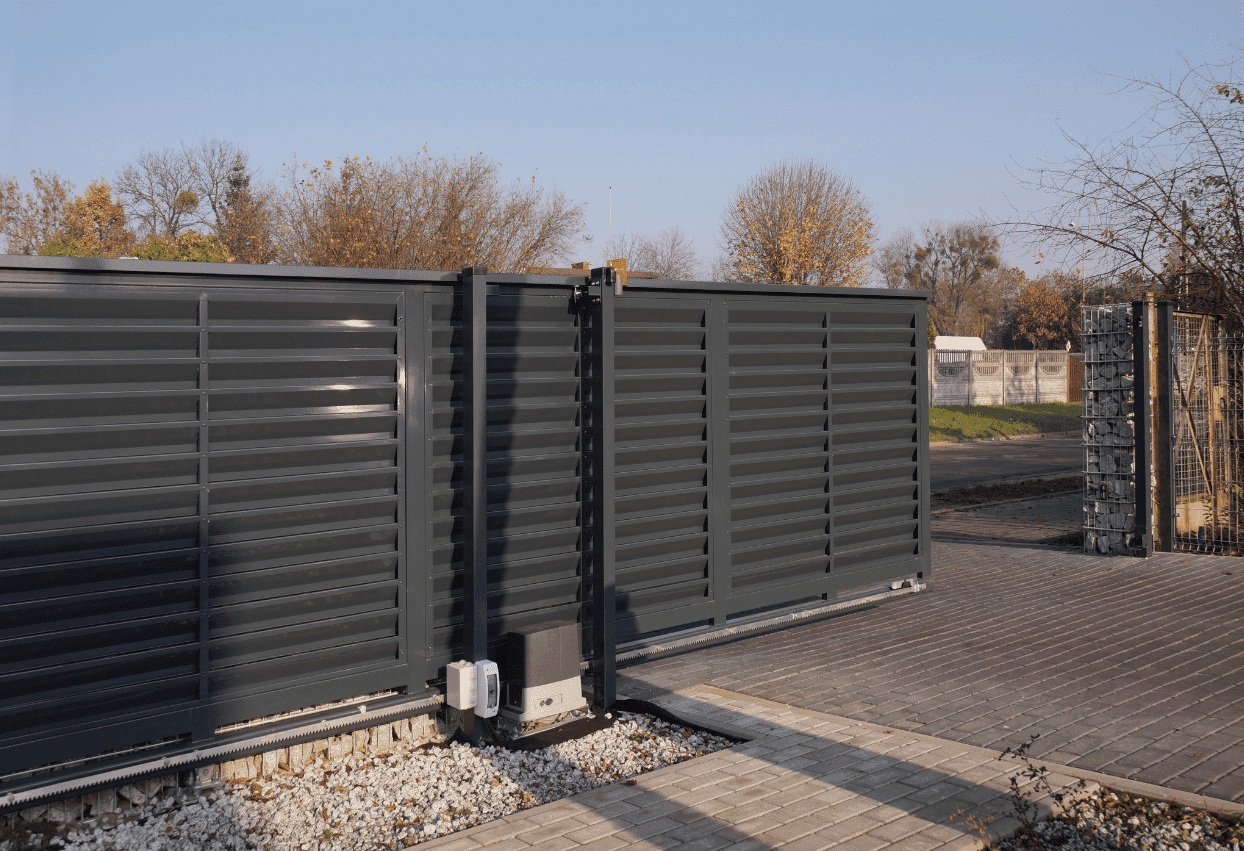Maintaining your automated gates is essential to ensure their long-term reliability, security, and performance. By following a set of best practices, you can extend the lifespan of your gate system, reduce the risk of unexpected issues, and enhance the safety of your property. Whether you have swing gate operators, slide gate operators, or any other automated gate system, this guide will provide valuable insights into the steps you can take to keep your gates operating smoothly. Regular maintenance not only preserves the functionality of your gates but also minimizes the need for costly repairs, ensuring that your investment continues to deliver convenience and security.
Regular Lubrication and Inspection
Proper lubrication is the cornerstone of gate maintenance. The moving parts of your automated gate, such as hinges, rollers, and bearings, require adequate lubrication to minimize friction and prevent premature wear. Lubrication also helps reduce noise, which is especially important in residential areas where noisy gates can be disruptive. To ensure smooth and quiet operation, it’s essential to use the right lubricants and follow a regular lubrication schedule recommended by your gate manufacturer.
The frequency of lubrication depends on factors like climate, usage, and the type of gate system you have. In general, it’s advisable to lubricate your gate components at least every three to six months. However, more frequent lubrication may be necessary in areas with extreme weather conditions or heavy gate usage. Regular inspection of the lubricated parts is also crucial to detect any signs of excessive wear, damage, or the need for reapplication.
Alongside lubrication, conducting routine inspections of your automated gate is equally important. During these inspections, look for loose bolts, misalignments, or unusual sounds during gate operation. Make sure that safety features, such as photo-eye sensors and edges, function correctly. By promptly identifying and addressing issues through regular inspections, you can prevent minor problems from escalating into major and costly repairs.
Scheduled Maintenance Routine
Maintaining your automated gates isn’t a one-time task; it’s an ongoing commitment to ensuring their optimal performance and longevity. Establishing a well-planned maintenance routine is essential to stay ahead of any issues and avoid costly repairs or replacements. Here are some key considerations for implementing a scheduled maintenance routine:
- Frequency: Determine how often your automated gates need maintenance based on factors like usage, environmental conditions, and manufacturer recommendations. A typical schedule might involve quarterly, semi-annual, or annual maintenance checks.
- Components to Inspect: Your maintenance routine should encompass a thorough inspection of various gate components, including motors, electrical wiring, safety features, hinges, rollers, and control panels. Assessing these elements regularly helps identify wear, damage, or signs of malfunction.
- Cleaning and Lubrication: Include cleaning and lubrication as essential tasks within your routine. Properly clean gate tracks, remove debris and lubricate all moving parts to minimize friction and maintain smooth operation.
- Safety Checks: Pay special attention to safety features, such as photo-eye sensors, safety edges, and emergency stop mechanisms. Verify that these components are functioning correctly to prevent accidents and ensure compliance with safety regulations.
- Documentation: Keep detailed records of each maintenance visit, noting any repairs or adjustments made. This documentation can be invaluable for tracking the gate’s performance over time and helping you identify patterns or potential
Issues.
By adhering to a consistent maintenance schedule that covers all these aspects, you’ll maximize the lifespan and efficiency of your automated gate and enhance the safety and security of your property. Regular maintenance reduces the risk of unexpected breakdowns and ensures that your gate remains an asset you can rely on.
Maintain Clean Tracks for Reliable Gate Movement
Proper maintenance of the tracks on which your automated gate operates is crucial to ensure the gate’s reliable movement and longevity. Over time, dirt, debris, leaves, and other foreign objects can accumulate in the gate tracks, causing friction, misalignment, and even damage to the gate system. Here are some key considerations for keeping your gate tracks clear and clean:
One of the most effective ways to maintain clean gate tracks is by implementing a regular cleaning routine. Here’s what you can do:
- Regular Cleaning: Schedule routine cleaning sessions to remove debris and dirt from the gate tracks. Use a stiff brush or a high-pressure air hose to dislodge any buildup effectively.
- Inspect for Obstructions: During cleaning, inspect the tracks for any obstructions or objects that might hinder the gate’s movement. Clear out foreign materials, such as stones or branches, to prevent damage.
- Lubrication After Cleaning: After cleaning the tracks, it’s advisable to apply a suitable lubricant to ensure smooth movement. Lubrication helps reduce friction and prevents the accumulation of dirt and rust.
Maintaining clean gate tracks promotes reliable gate operation and extends the life of your gate components. It’s a simple yet essential part of gate maintenance that can significantly impact the performance and longevity of your automated gate system.
Monitor Electronic Components
Electronic components are vital in controlling and managing gate operations in today’s automated gate systems. These electronic parts include controllers, sensors, wiring, and access control systems. Regularly monitoring these electronic components is essential to ensure your automated gate’s optimal functionality and security. Here are some key considerations for monitoring electronic components:
One critical aspect of monitoring electronic components is routinely inspecting all control panels and wiring for wear, damage, or loose connections. Here’s what you can do:
- Visual Inspection: Periodically examine the control panels, circuitry, and wiring for any visible damage, corrosion, or loose connections. Pay attention to frayed wires, exposed conductors, or any irregularities in the control systems.
- Test Sensors and Safety Features: Verify that sensors, photo-eye sensors, safety edges, and other safety features function correctly. These components are integral to preventing accidents and ensuring safe gate operation.
- Check for Error Codes: Many automated gate systems have diagnostic features that display error codes in the event of a malfunction. Regularly check for error codes on the control panel and consult the manufacturer’s documentation for troubleshooting guidance.
By proactively monitoring and maintaining the electronic components of your automated gate system, you can prevent unexpected failures and ensure that your gate continues to operate reliably and securely. This not only enhances convenience but also contributes to your property’s overall safety and security.
Adjustments and Alignment
Maintaining proper alignment and adjustments in your automated gate components is essential for your gate system’s overall performance and longevity. Over time, factors like ground settling, temperature changes, and normal wear and tear can lead to misalignments and inconsistencies in gate operation. Here are key considerations for keeping your gate components in precise alignment:
Regularly inspect the alignment of your gate components, including gate panels, hinges, rollers, and tracks. Misalignments can lead to uneven gate movement, increased strain on the motor, and premature wear on components. Here’s what you can do:
- Hinge Inspection: Examine the hinges to ensure they are securely attached to both the gate panels and the gate posts. Loose or damaged hinges can lead to gate misalignment and should be tightened or replaced as needed.
- Track Alignment: Check the alignment of the gate tracks to ensure they are parallel and at the correct height. Misaligned tracks can cause the gate to bind or become stuck during operation.
- Roller Condition: Inspect the condition of the rollers and ensure they are in good working order. Replace worn or damaged rollers promptly to prevent further damage to the gate and the motor.
Proper adjustments and alignment not only promote smoother gate operation but also reduce the risk of costly repairs and extend the life of your gate system. Regularly monitoring these aspects of your gate’s mechanics is a proactive approach to ensure precision and reliability in its performance.
Weatherproofing and Rust Prevention
Weather can be one of the most significant challenges for automated gates, as exposure to the elements can lead to corrosion and deterioration over time. Implementing weatherproofing and rust prevention measures is essential to ensure the long-term reliability of your gate system. Here are key considerations to protect your gate:
Proper weatherproofing starts with selecting the right materials for your gate. High-quality, corrosion-resistant materials such as galvanized steel or aluminum are excellent choices. Regularly inspect the gate’s surface for signs of rust or corrosion. If you notice any, promptly remove it using appropriate rust removal methods, and then apply a rust-resistant paint or coating to protect the exposed metal surfaces.
Besides the gate itself, it’s crucial to inspect and maintain the gate’s electrical components, such as wiring, control panels, and sensors, for weather-related damage. Ensure all electrical connections are sealed against moisture, and that junction boxes and control panels have proper enclosures. This prevents water intrusion and electrical malfunctions caused by exposure to rain or humidity.
Consider installing weatherstripping or seals along the gate’s edges and between panels to prevent water from seeping into critical components. Regularly clean and lubricate gate tracks, hinges, and moving parts to avoid moisture-related issues and ensure smooth operation. By implementing these weatherproofing and rust prevention practices, you can significantly extend the life and reliability of your automated gate, even in harsh weather conditions.
Professional Assistance
At R3 Access, our team of experts possesses the knowledge, experience, and technical know-how to ensure your gate system operates at its best, promoting safety, security, and peace of mind. Whether you require routine maintenance, diagnostics, repairs, or upgrades, our skilled technicians are ready to assist. Don’t wait until issues escalate—take proactive steps to safeguard your investment. Contact R3 Access today, and let us provide you with the professional assistance your gate system deserves.


